
You might like
- NewsClimate Visuals images exhibited across King’s Cross in London
- NewsVisualising ‘Our Power, Our Planet’ for Earth Day 2025
- NewsVisualising climate-linked migration
- NewsAir pollution images exhibited at the WHO Second Global Conference on Air Pollution and Health
- NewsA new collection of energy images
Photos of the natural environment do not reflect the social, ethnic or geographic diversity of the country, which may create barriers to some people enjoying and feeling a sense of belonging in nature. How can we build a better, more inclusive visual language?
Images matter. As people, we need to see ourselves in images relating to the natural environment so we connect with them and see the relevance of them to our lives. The photos we see of natural spaces need to be inclusive, authentic and show people from diverse backgrounds in diverse outdoor spaces. This is also important for connecting people with messages around our big challenges including climate change and biodiversity loss. Experiencing natural spaces in all kinds of ways helps to provide that connection and we know that for some, this is not currently part of their lives.
This matters for climate change too. Spending time in nature is a proven way to engage people with the climate crisis and a lack of inclusive imagery makes it harder to build a diverse climate movement.
Natural England commissioned Climate Outreach to speak with conservation organisations, community groups, online influencers and nature enthusiasts to explore how we can diversify the images of people and nature, resulting in a practical, evidence-based report. Below we highlight its set of six principles, developed to help guide the production of images that showcase the variety of ways that people can connect with and benefit from nature.
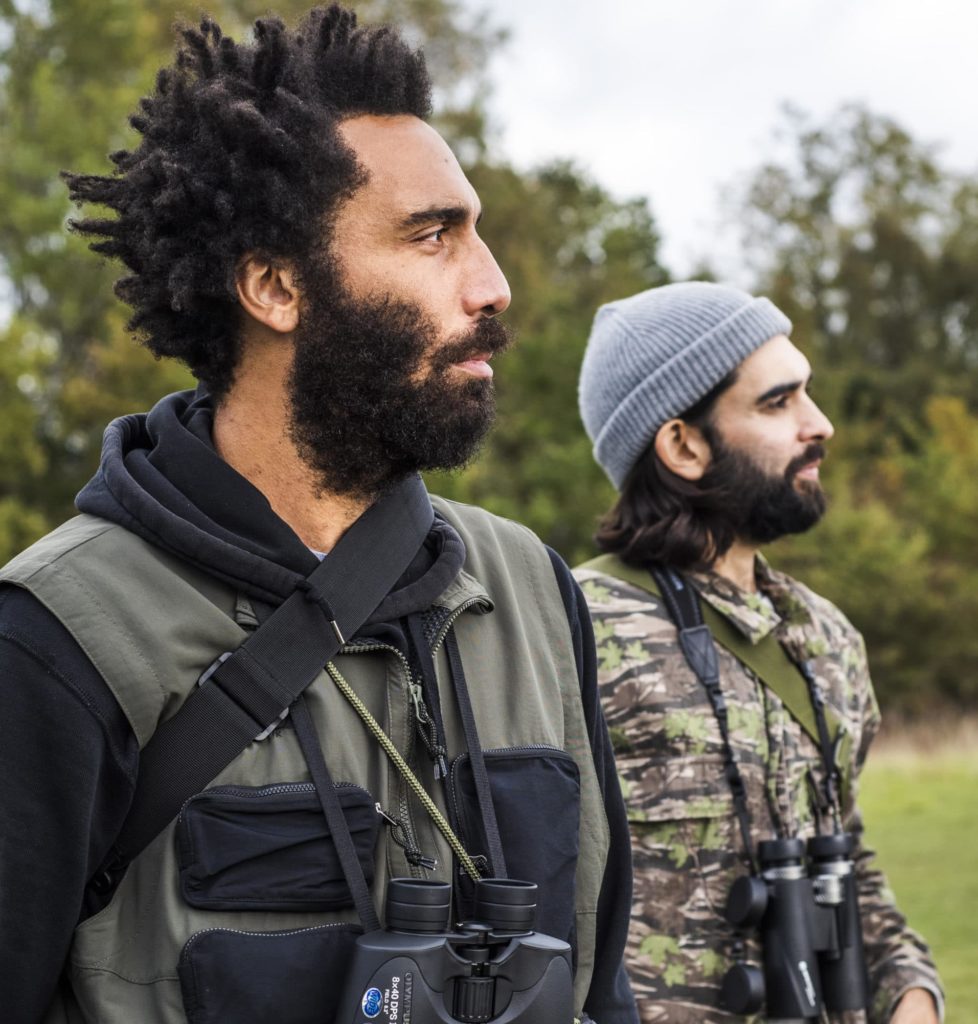
1 – Use images to tell positive, identifiable stories
Visuals can capture attention, promote interest and motivate engagement. Showing diverse individuals doing fulfilling activities in natural spaces will enhance feelings of inclusion and belonging. These positive representations are critical for reaching out to people who are left out of traditional outdoor narratives
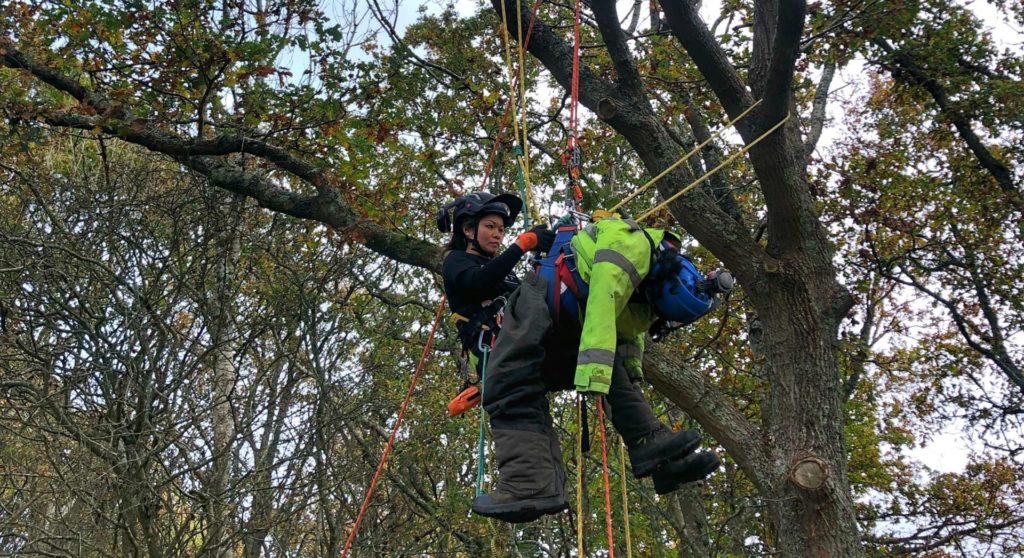
2 – Create authentic representation, not tokenism
Authenticity is critical to telling an empowering, inclusive story that audiences will connect with. Stock imagery and staged portraits provide a veneer of representation but are not empowering and may backfire if they are perceived as fake or tokenistic. Display real images of diverse individuals enjoying a variety of natural spaces in ways that can connect with them on a personal level.
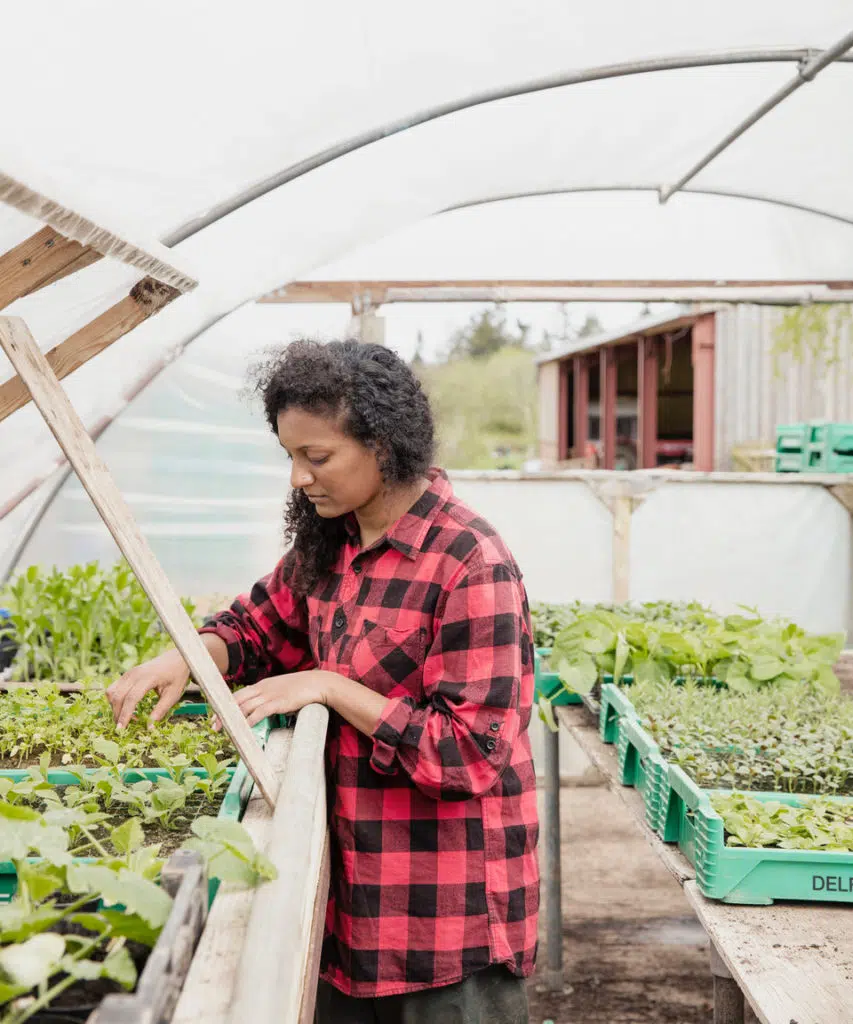
3 – Depict diverse activities in diverse landscapes
The cultural narrative of what it means to enjoy the outdoors is dominated by a narrow subset of landscapes, activities and people. Expand representation to break through harmful stereotypes and embrace new and different visual narratives of spaces, people and activities.
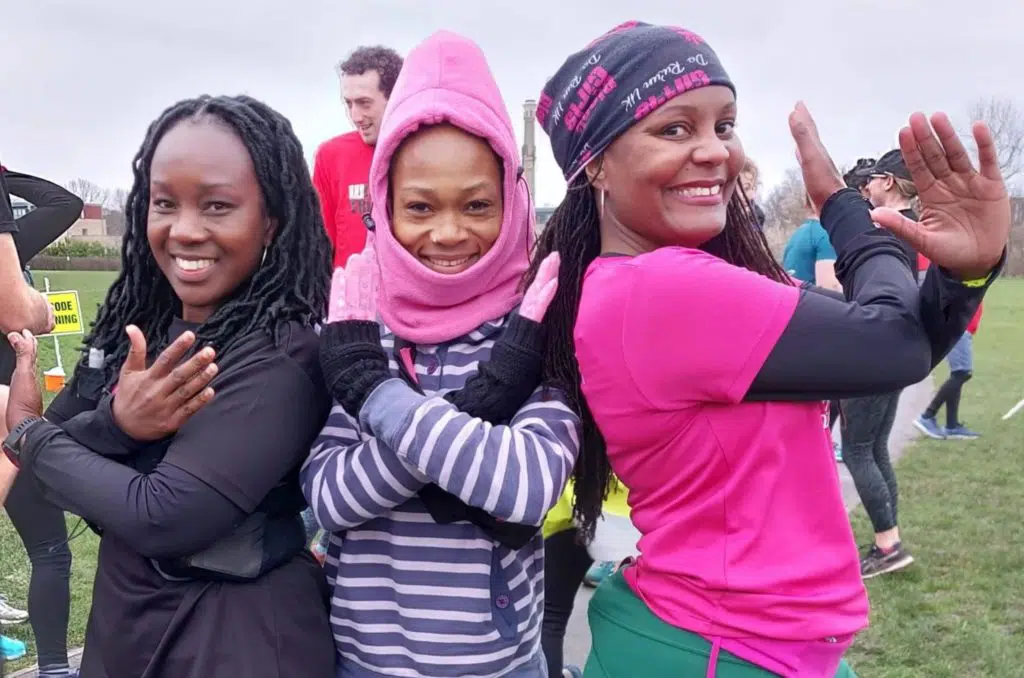
4 – Connect people to the wonderful diversity of natural places, from urban parks to national landscapes
Most people live in towns and cities and most outdoor experiences occur in urban areas. Yet imagery of natural spaces focuses on the countryside. We need to show more urban green areas and tell visual stories about people enjoying nature in their everyday, as well as on holidays. This could be walking a tree-lined urban avenue or walking a national trail, a day trip to a city park or to a national park.
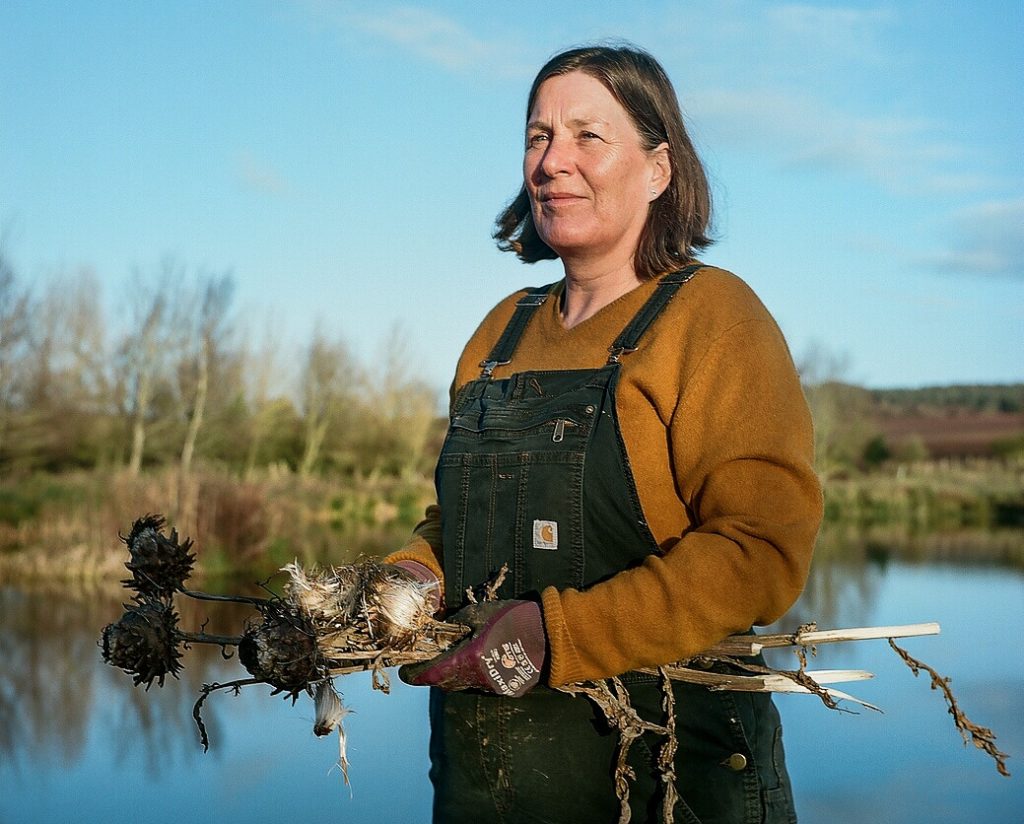
5 – Include more real people in images
Images of idyllic countryside tend to dominate the visual story, but they do not fully represent the many reasons people enjoy the outdoors. Broaden the visual narrative and connect natural spaces to peoples’ everyday lives by capturing the many ways people use the outdoors to connect with friends and family, as well as with nature.
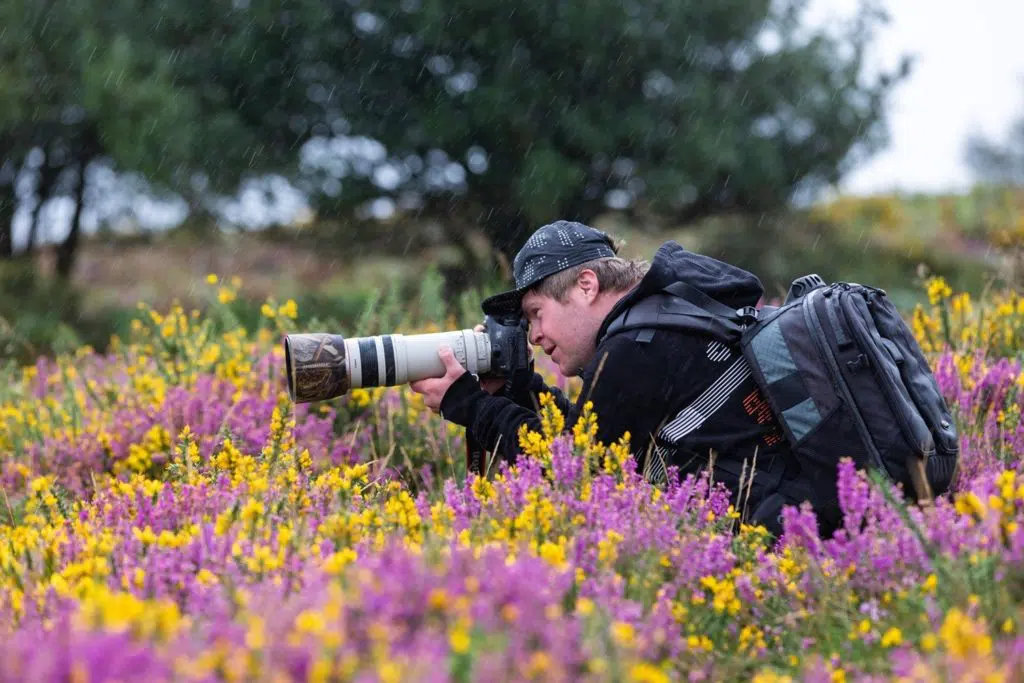
6 – Diversify who is behind the camera and the message
Fixing the ‘who’, ‘what’, and ‘where’ of outdoor imagery is only part of the solution. We also need to diversify who is behind the camera and designing the wider communications, in order to provide greater authenticity and empowerment to those being photographed.
A diverse group of individuals are already harnessing the power of social media to shift the outdoor narrative by documenting their own experiences. Learn from these people and work with them to create new visuals.
Principles at a glance
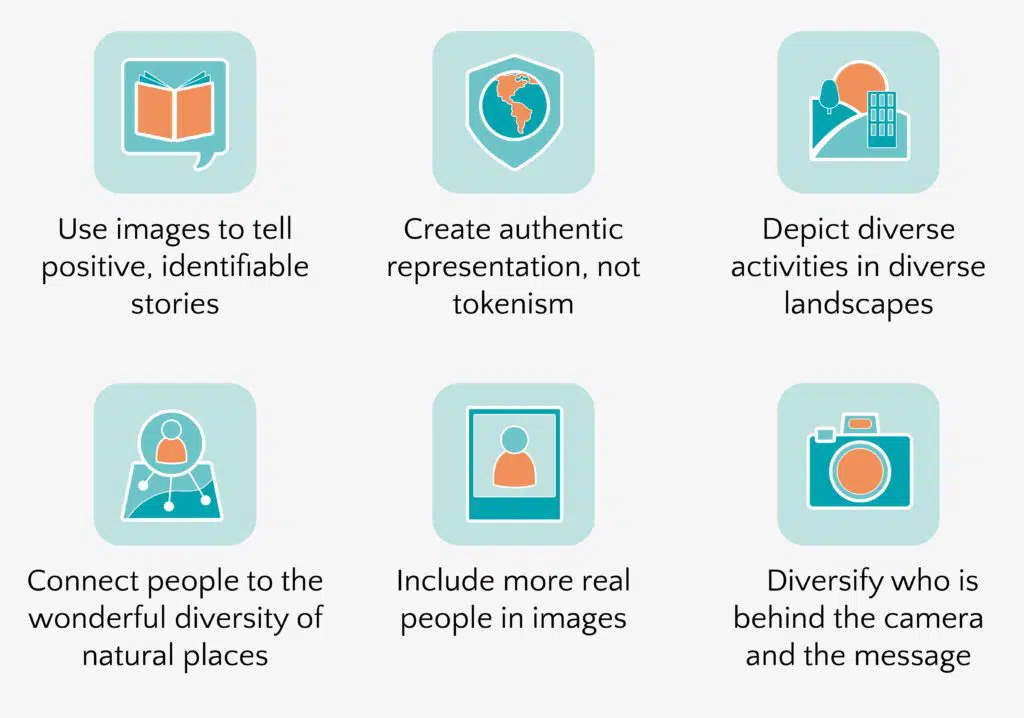
Watch the webinar
Here we present our report and findings and show visual examples while hearing about the practical changes we need to see around nature visuals from photographer Joanne Coates and Judy Ling Wong CBE, an environmental activist. Watch the Nature Visuals webinar
Read the full report

